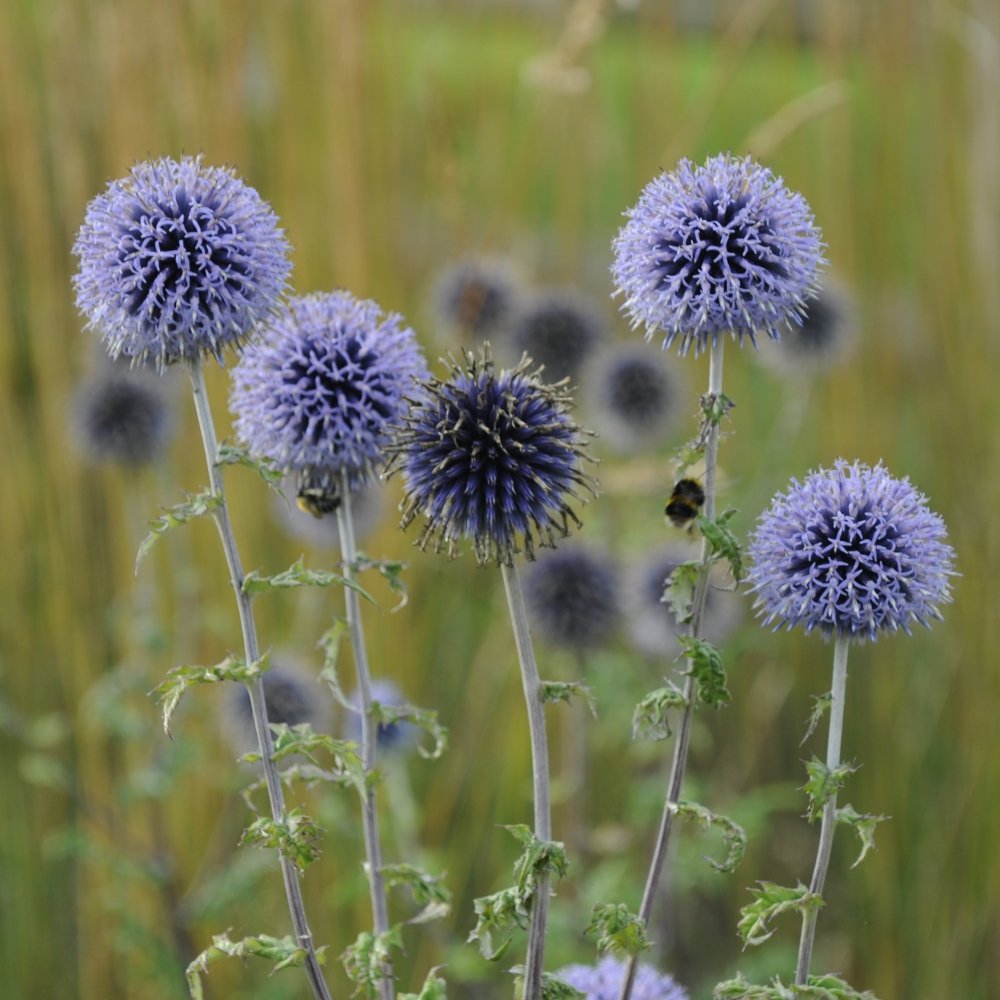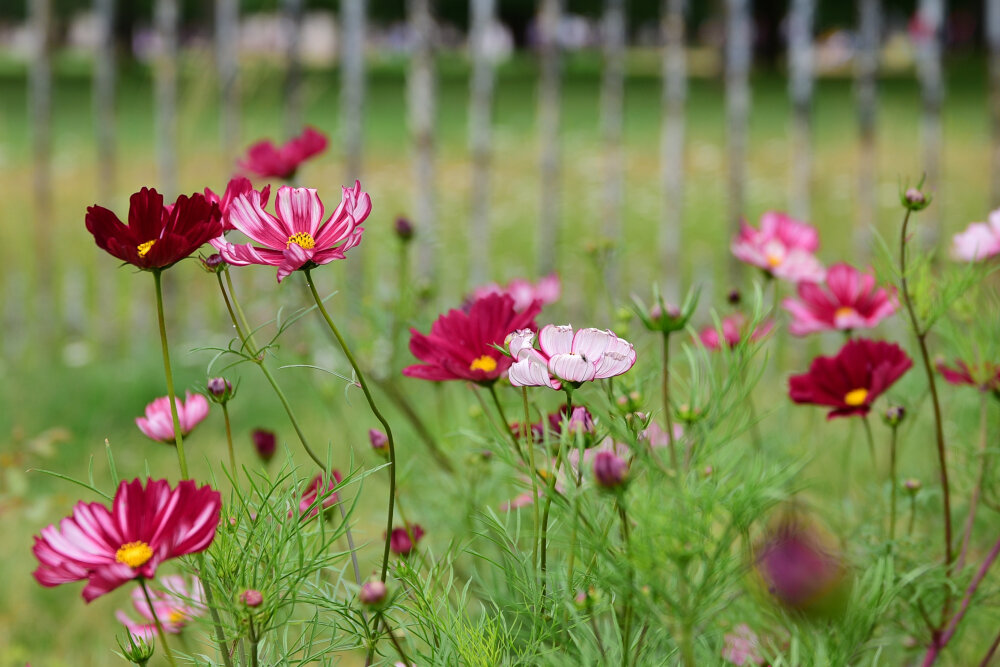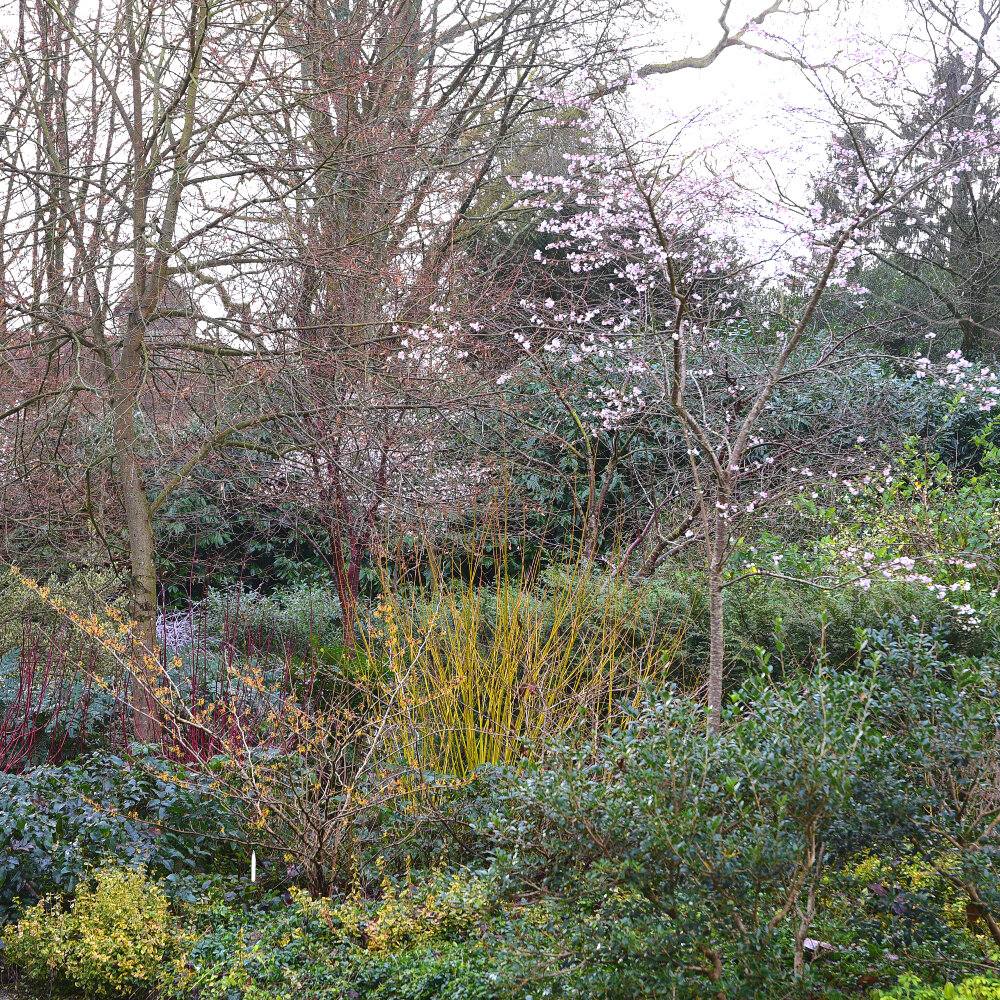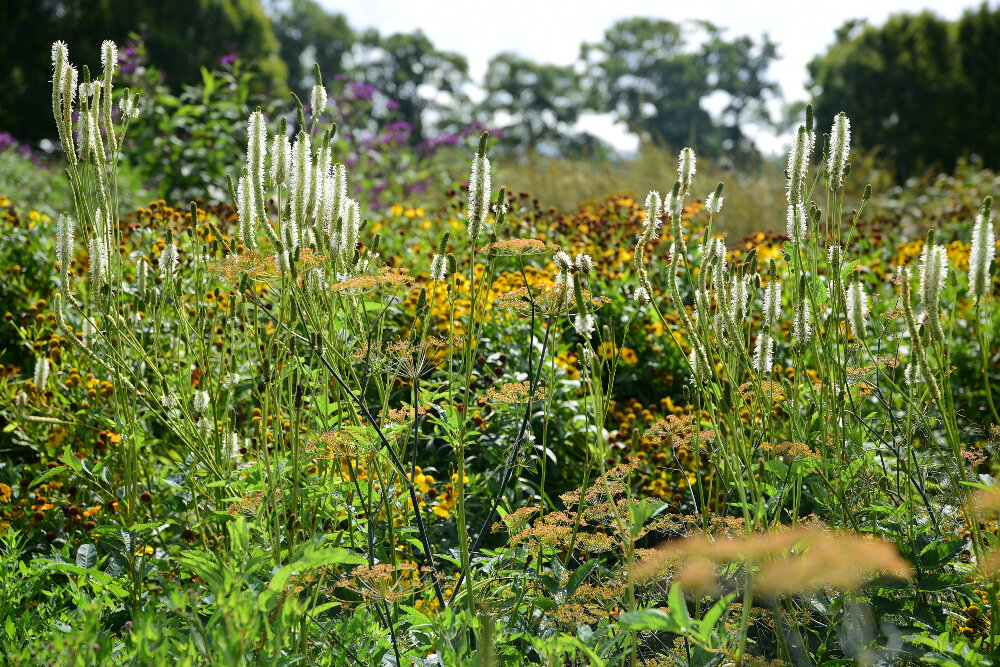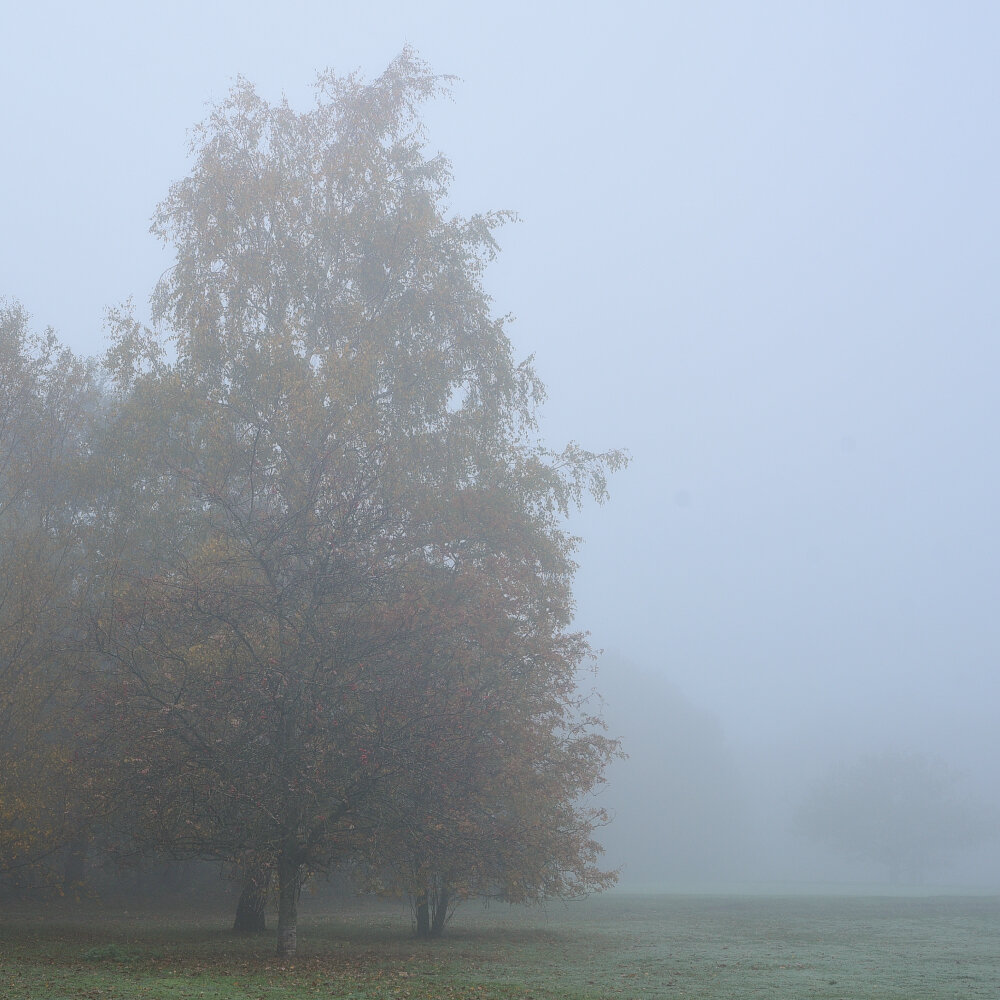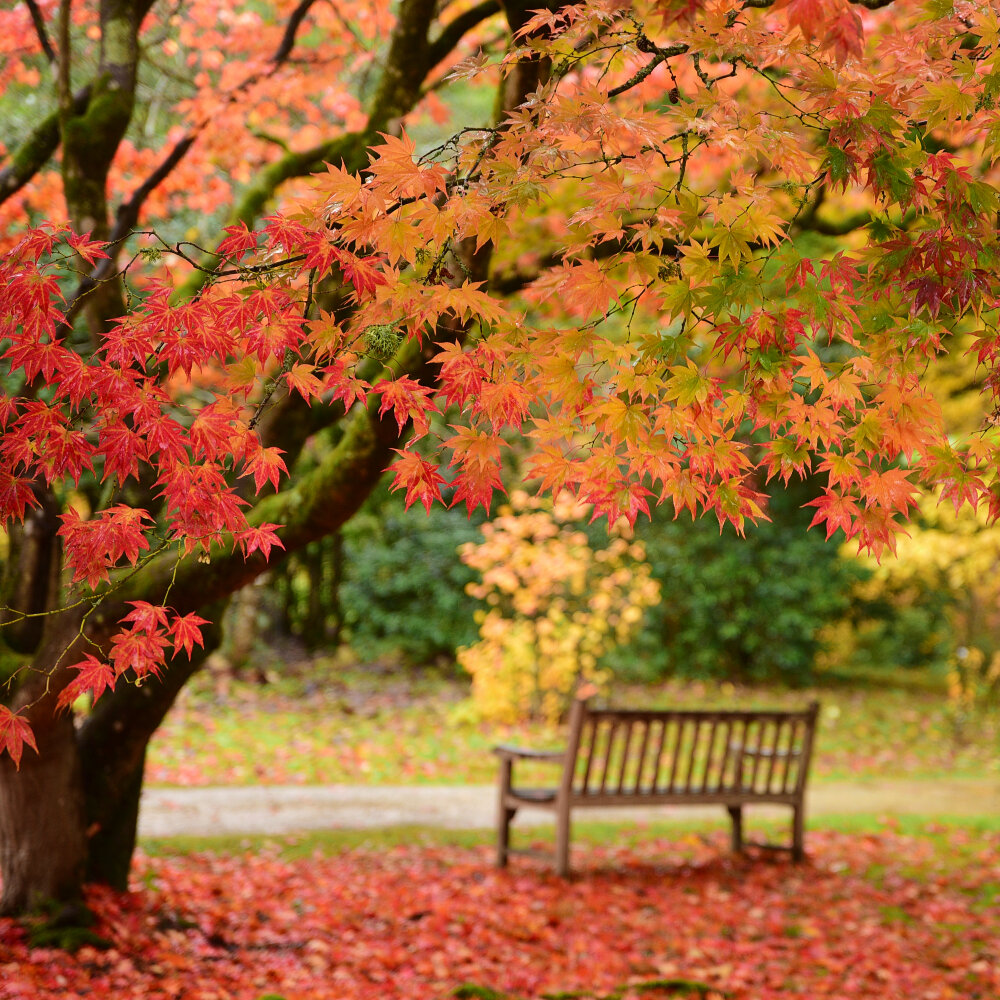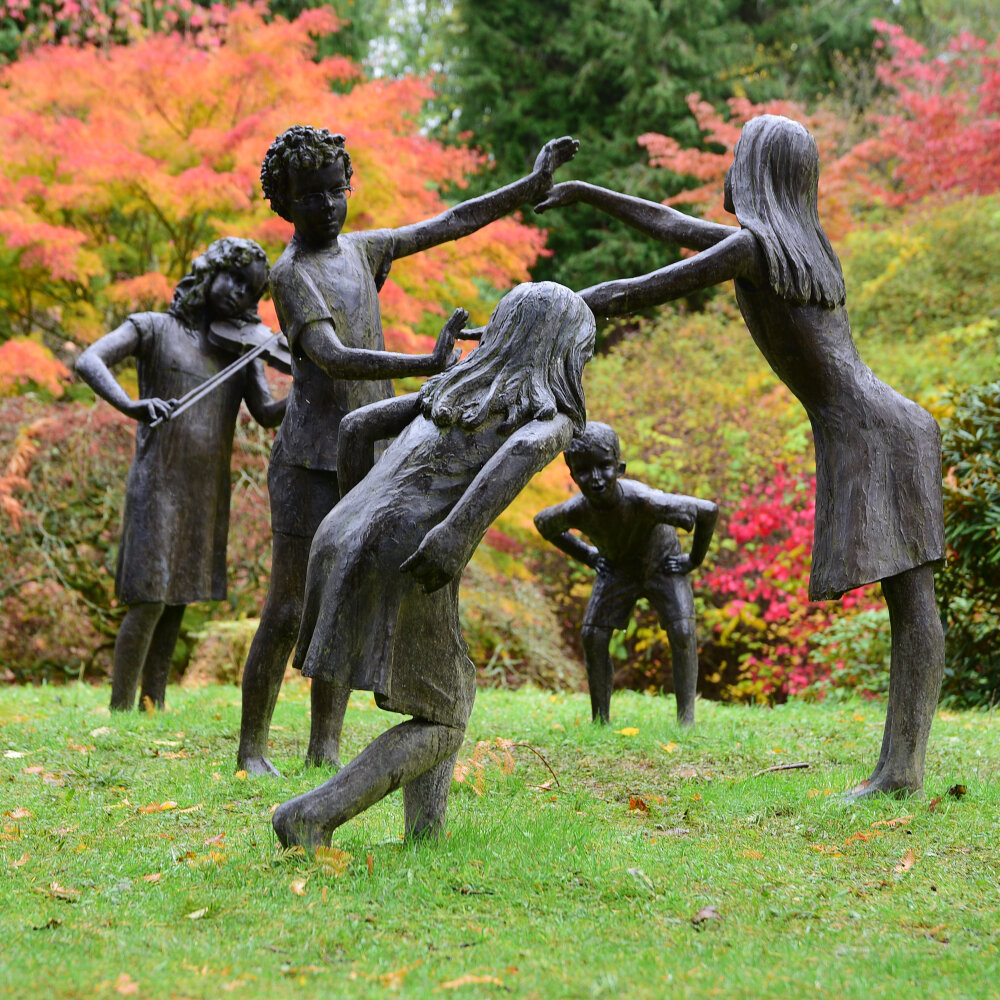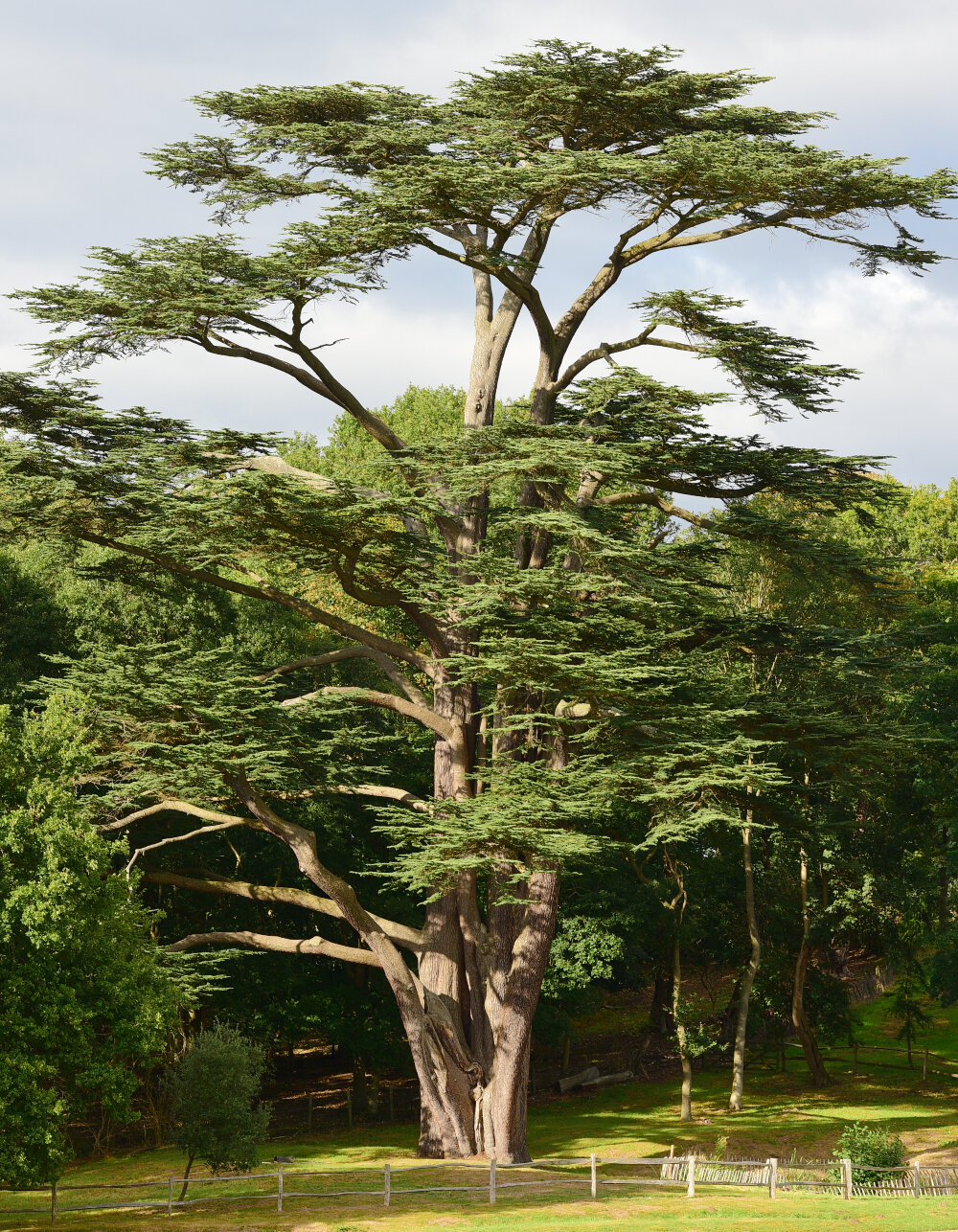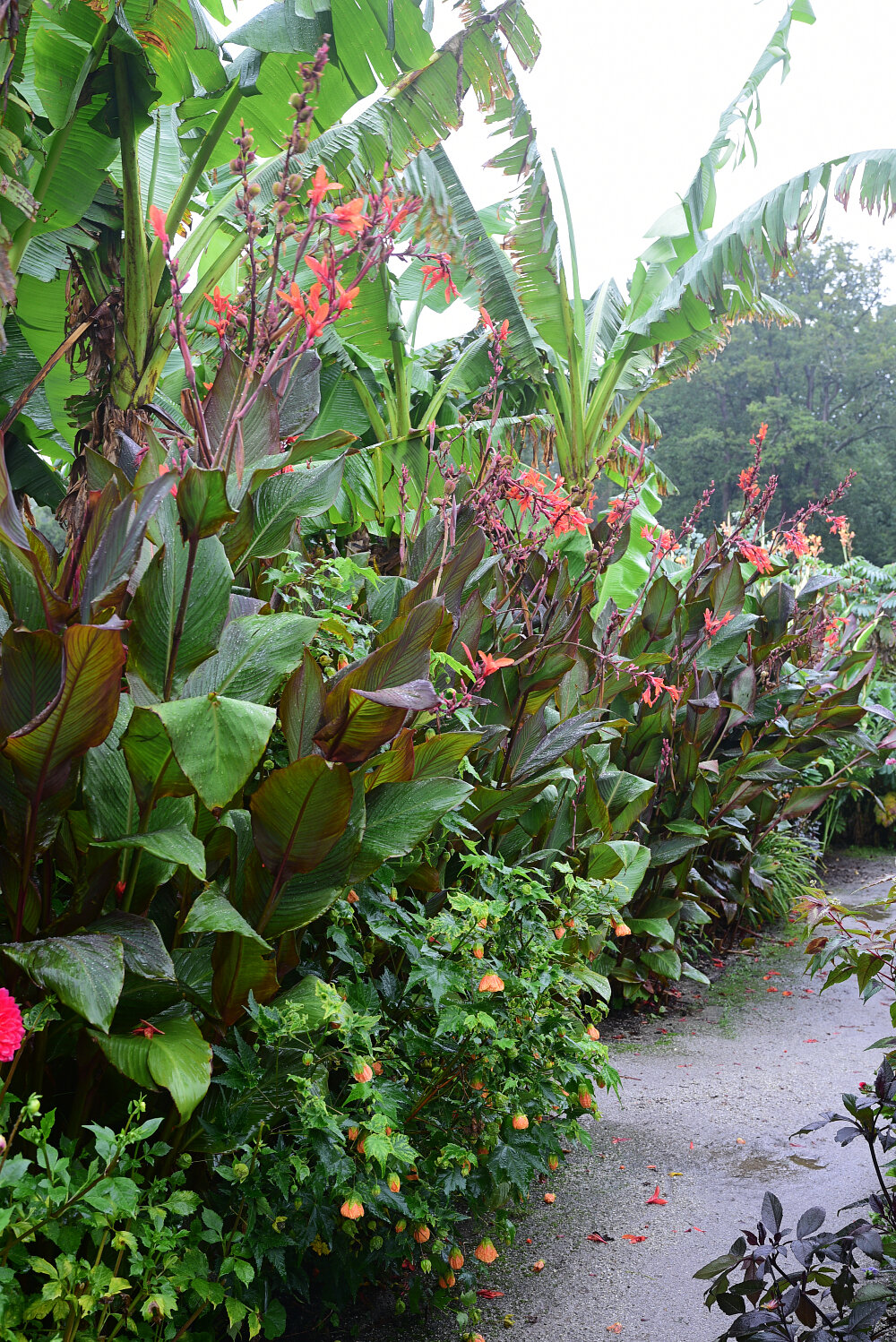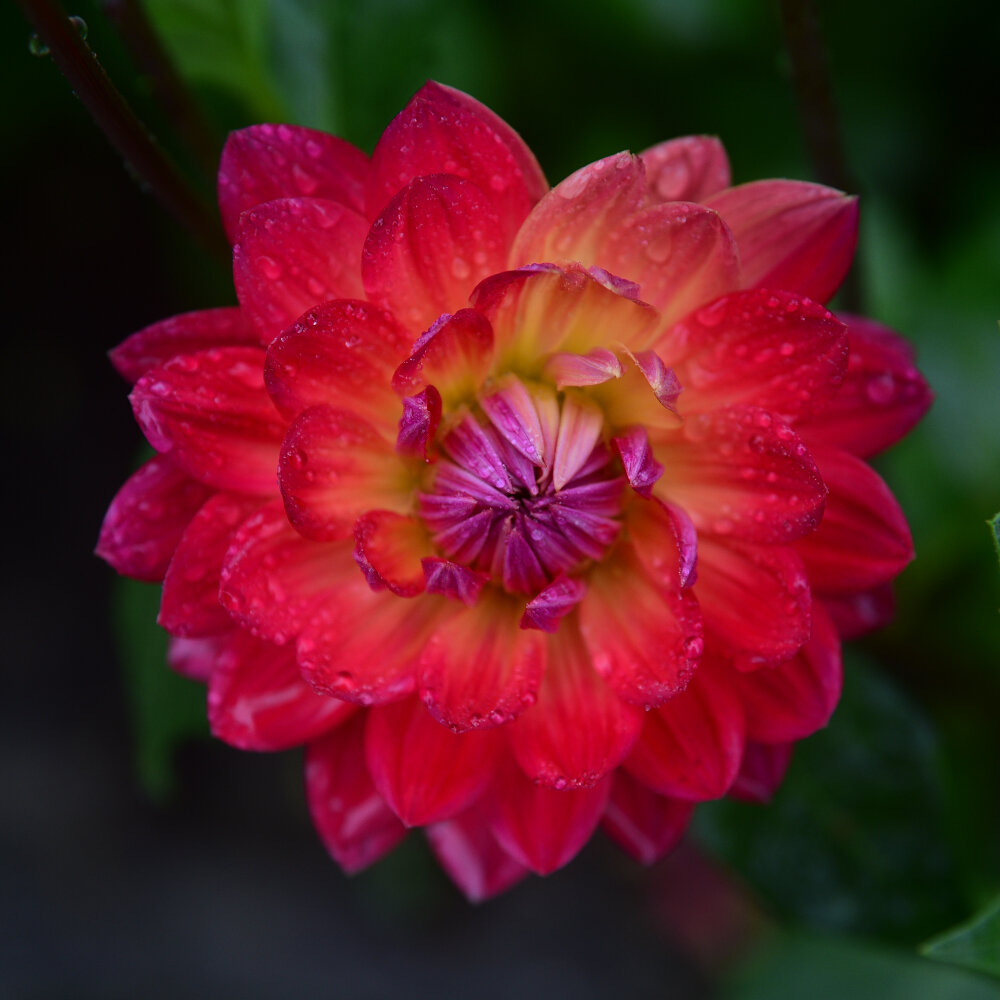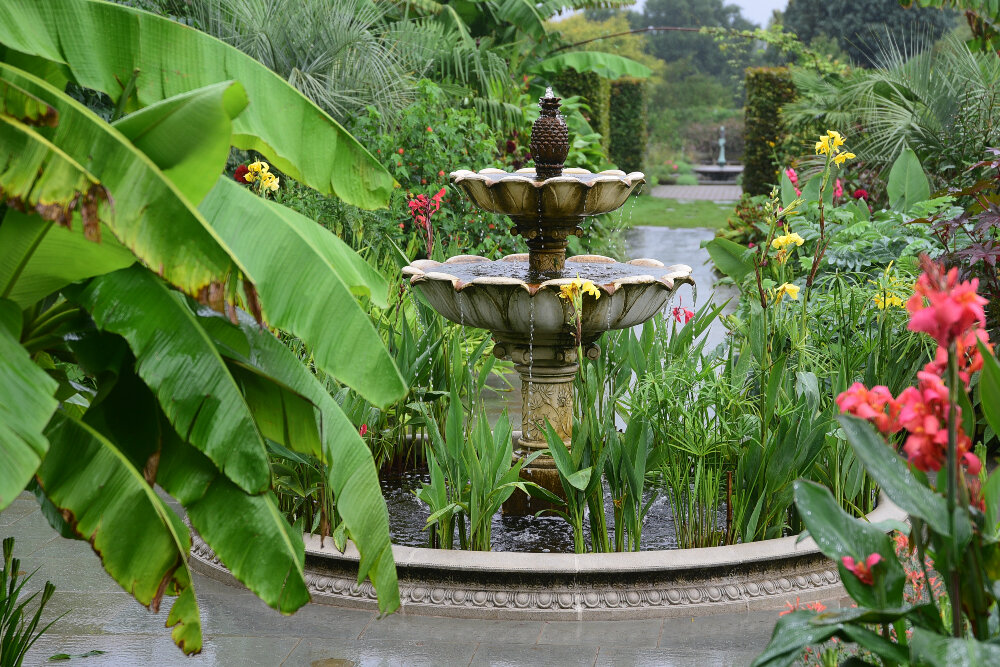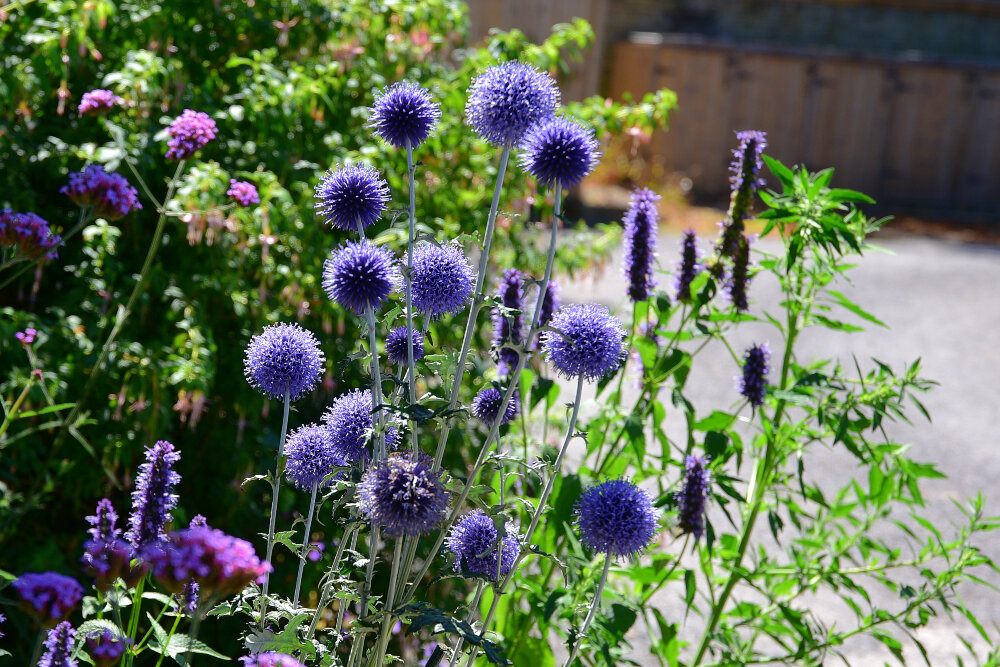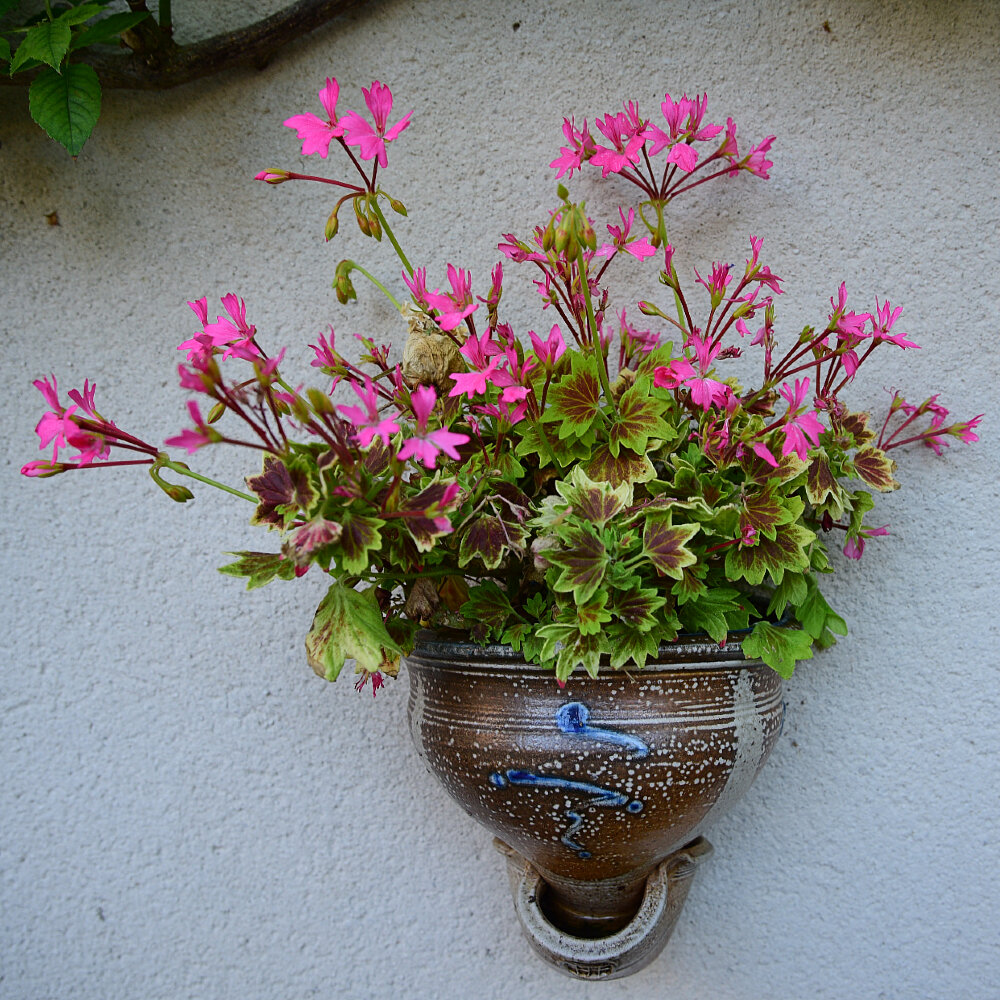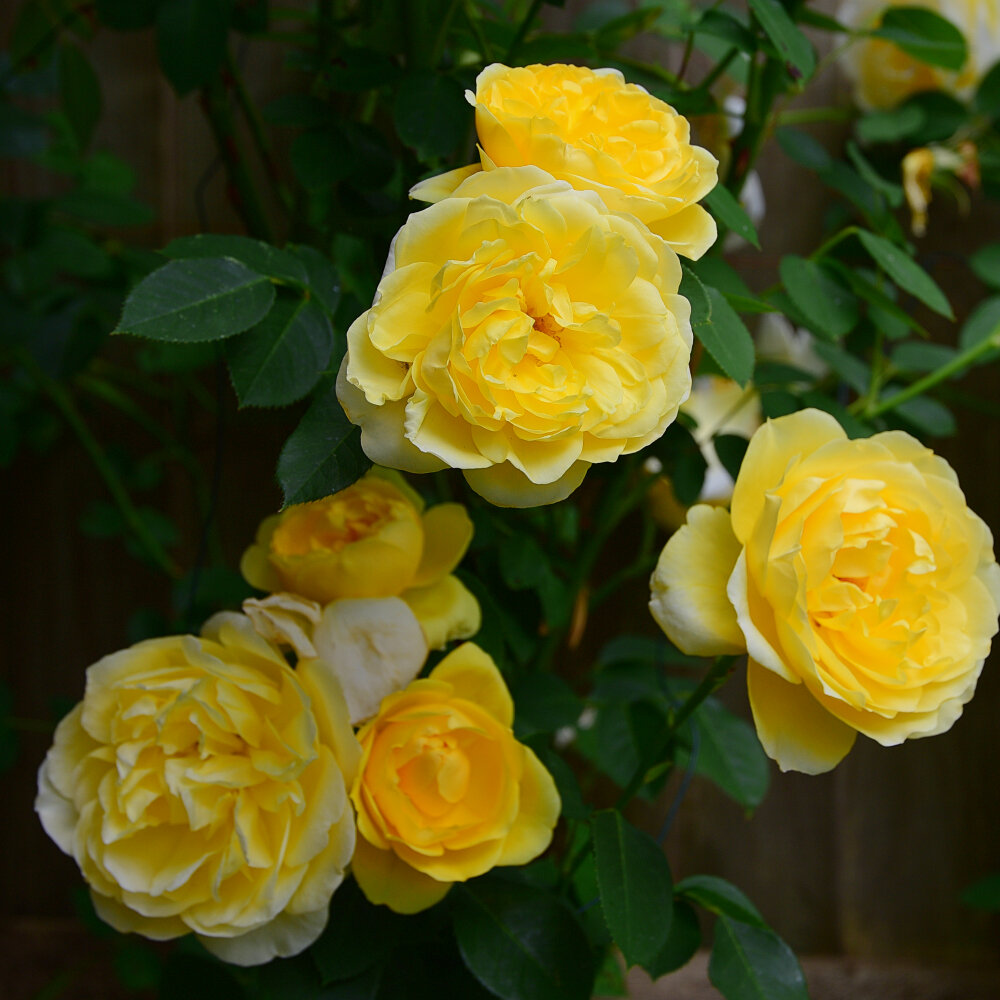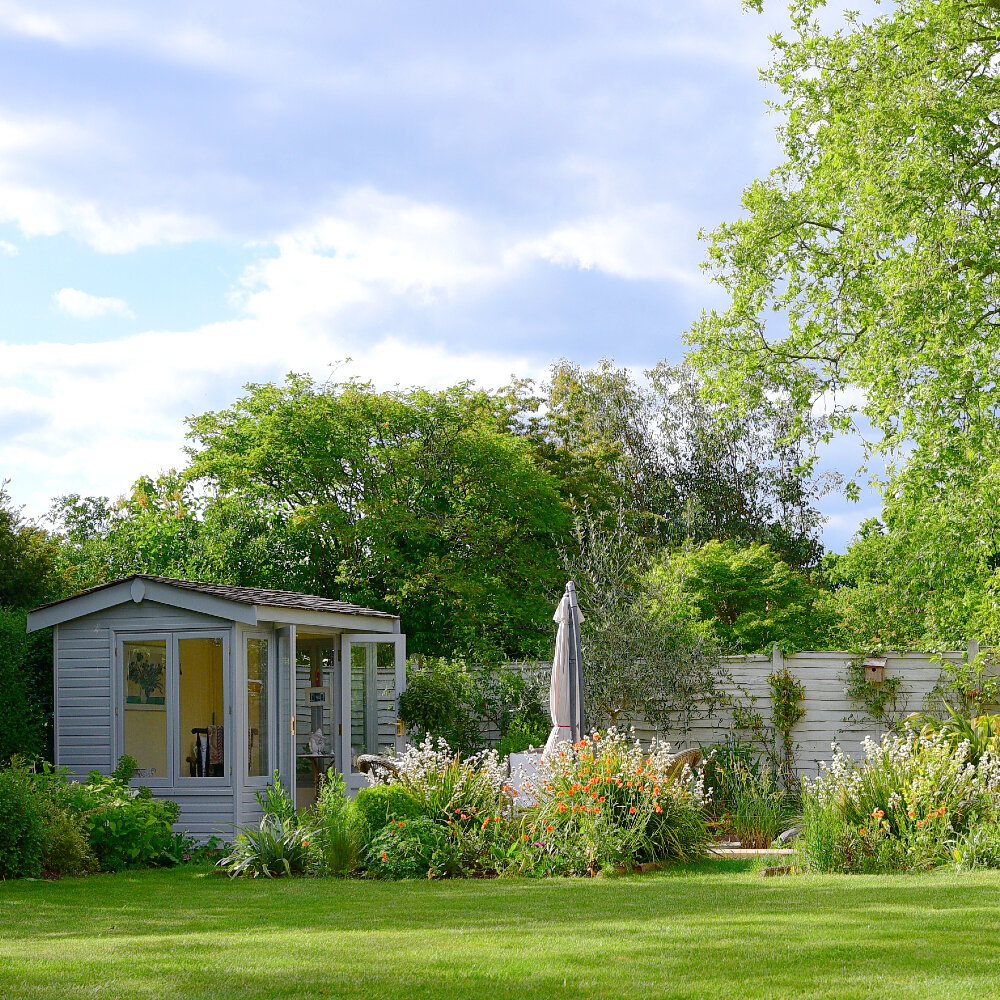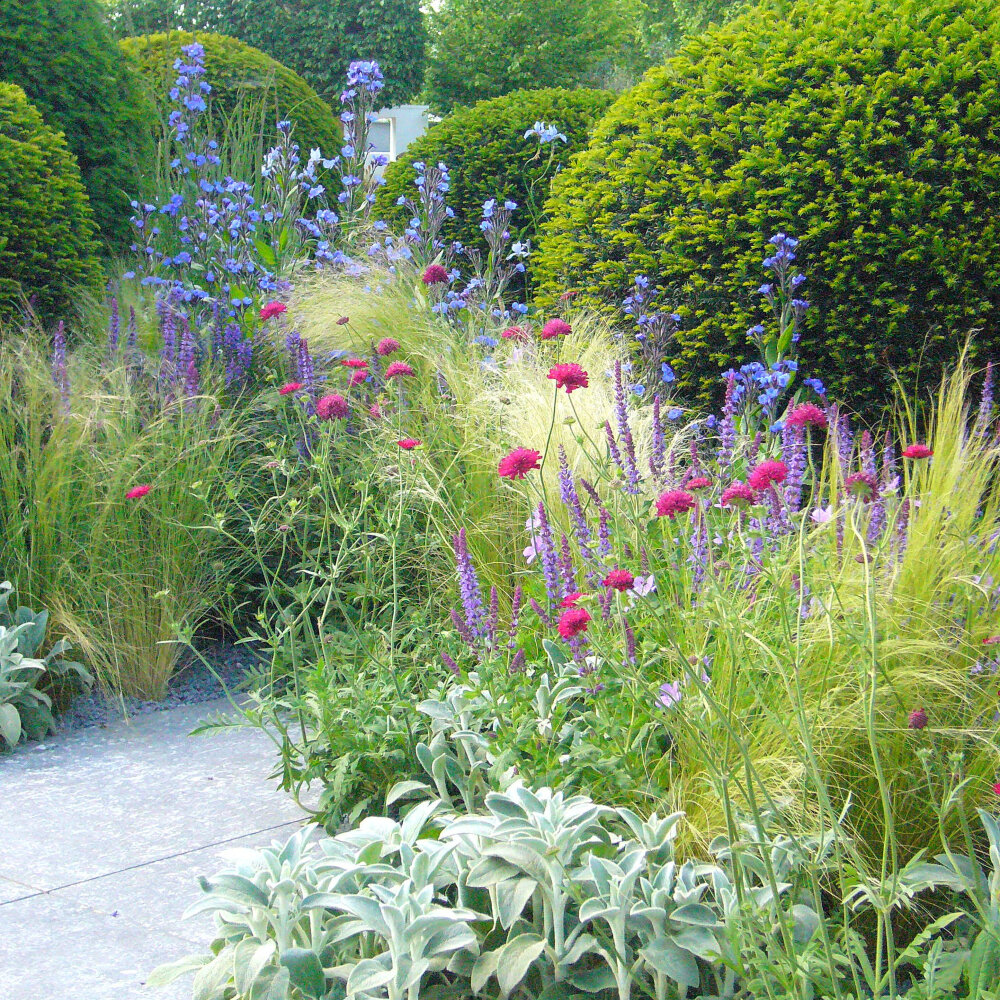True blue - flowers for a sunny border
Blue flowers are perennially popular. I am asked for blue flowers probably more than any other colour. There are very few true blue flowers; most are a variation of purple or pink and I think it these tints and hues that make blue flowers relatively easy to combine either with themselves or contrasting or complimentary colours.
These plants are all well-suited for a sunny border. In gardening terms that means a border that receives sunlight for at least six hours a day. Some will tolerate a bit less but you won’t see the best of them.
Clematis Romantika
When starting a new border I like to start with the tallest and/or most structural plants. A clematis like this Romantika will clothe a fence in midummer without taking up a lot of space. You could also use C. Jackmanii or C. alpina for a paler blue in late spring.
Hibiscus syriacus Oiseau Bleu
There are not too many blue-flowered shrubs to choose from. This Hibiscus will flower for a long time and can be pruned if it gets too large. An alternative would be to choose a Ceanothus but as they don’t like being pruned you need to be careful to select one that will fit your space at its maturity.
Iris Jane Philips
Echinops ritro Veitch’s Blue
Next I like to think about taller perennials. This combination of Iris and Echinops will give you tall blue flowers from May through to August. If you’re lucky the Echinops may give you a second flush or flowers later in the summer. I also like Agastache Black Adder but I’m afraid I’ve long given up on Delphiums and Lupins as they are just too popular with slugs and snails. The taller Agapanthus are also good value, one of my favourite is A. Navy Blue.
Aquilegia Blue Barlow
Aquilegia Blue Barlow straddles the space between taller and shorter perennials but it is a great shot of darker blue in April and May. Other blues in this space could include Penstemon Alice Hindley and Nepeta racemosa Walker’s Low.
Geranium Rozanne
Salvia nemorosa Caradonna
On to lower, more spreading perennials. Geranium Rozanne was voted plant of the century by the RHS and really it’s not hard to see why. It flowers from May to November and doesn’t need to be dead-headed or cut back until spring the following year. And my personal favourite, Salvia nemorosa Caradonna. Ok, it’s quite purple, but I love the black stems and it will often give a second flush if dead-headed.
Scabiosa Butterly Blue
Scabiosa Butterly blue is one of my favourite blue flowers and these, like all blue flowers, are really popular with pollinators.
Crocus tommasianius
Spring bulbs in blue are a bit harder to find. I like purple crocuses and they will spread quite slowly through the border. Muscari, grape hyacinths, are a really nice bright blue. The best blue bulbs are Camassias but as these prefer damp soil and dry sunny border is not always the best place. Of course there are bluebells. Unless you really like the Spanish hybrids I think native bluebells are best shown off in woodland rather than a sunny border.
These are just a slection of some of my favourite blue flowers, you may have a few of your own. Getting a good combination of height, flowering times and plant and flower forms will make your border look more interesting. And of course, you’ve heard it many times before, unless you’re planting up a pot, do try and get several of the same type to make a good show.
If all blue is a bit too much then it is an easy colour to combine with others. Try yellow or bright green for a zingy spring feel, orange for a fully saturated late summer look. And pale or bright pink works for a more traditional scheme. Or throw out the rule book and mix in reds, oranges and purples for a surprise.
Blue, pink and white in a client’s garden
Palheiro Gardens
If Palheiro Gardens were the first gardens you were to visit in Madeira you would be forgiven for thinking they were set on a fair old slope with more than one or two steps. If, however, you’d already been to some of the other well-known gardens on the island you’d agree with the the original owner, the 1st Count of Carvalhal, that this was a pretty flat site, ideal for a garden.
View across the main lawn
Formerly known as Blandy’s, the Palheiro Gardens in Madeira were set out in the early 1800s. Appearing somewhat English in layout with lots of garden rooms, its location just 300 miles off the coast off the coast of Morocco and 500 metres up the side of an old volcano means that a wide range of plants can be grown - from old English roses and London Planes to Himalayan camellias, American magnolias and redwoods, a Brazilian candelabra tree and Australian proteas.
Cineraria, usually grown as an annual in the UK
Initially the garden was most famous for its collection of cammellias, thought to number in the thousands. There are nowhere near as many now and at the time of my visit had mostly finished flowering.
Cantua buxifolia - the Peruvian magic tree!
Madeira is famous for its mild and sunny climate, described as a year round spring. The gulf stream ensures a steady sea temperature of 18 degrees and the height of the old volcanoes means there is no shortage of rain. Plant growth is rapid and to a sun-starved Englisher visiting in April it can seem a bit wierd to see roses, camellias, crocosmia, asters and wisteria all in flower at the same time. Truly, the holy grail of gardening - all year round colour - can be achieved here.
Clianthus punecius - aka lobster claw or parrot’s bill
There were very few labels on the plants so it’s been fun trying to identify many of the wierd and wonderful plants in the garden. The guide book did give a list of the most interesting plants at the back so I’ve spent a lot of time googling them.
Dierama or gladiolus?
Madeira itself has a rich vein of native species, including this Geranium maderense which can grow up to 1.5m tall. In the UK it is not hardy but grows almost everywhere on Madeira.
Dierama or gladiolus?
Whatever it is, the way you tell your story online can make all the difference.
Again, Dierama or Gladiolus?
Moschosma riparium or Tetradena riparium
Moschosma riparium or Tetradena riparium
Streptosolen jamesonii - the marmalade bush
The Sunken Garden is the most English part of the gardens. The parterre is bisected by paths with a small lily pond in the centre. It’s a good place to park people who don’t fancy the longish downhill walk (and uphill return) to the tea rooms.
Streptosolen jamesonii - the marmalade bush
Telopea speciosissima - the New South Wales waratah
Telopea speciosissima - the New South Wales waratah
View across to the Islas Desertas
Wisteria and a lone delphinium in the main garden
The tea rooms are in an old orangery and if you don’t mind the slow service the home made cake is worth the wait. There were china cups, saucers and plates mind, something we found more often than not in Madeiran cafes, along with English spoken everywhere - by tea shop ladies, supermarket shelf-stackers, petrol station cashiers, pharmacists….
Of the three gardens we visited on Madeira this was my favourite. It was the least busy, the cheapest and the most interesting in terms of layout and plant/flower content. It’s also the easiest to get around if you’re not so mobile these days.
Palheiro Gardens - https://www.palheironatureestate.com/palheiro-gardens.html
Wakehurst Place winter garden
Prompted by a friend’s account of her visit to Wakehurst Place in December I finally made it out to the High Weald of West Sussex. I’d gone primarily to see the Winter Garden, but as it was my first visit I also walked quite a long way round the very hilly parkland.
The winter garden viewed from the croquet lawn
Wakehurst is owned by the National Trust (free entry if you’re a member) but run by the Royal Botanic Gardens, Kew. It is home to the Millenium Seed Bank which is also managed by Kew. There’s a 16th century mansion (currently closed for renovations) and nearly 500 acres of gardens and parkland.
Betula utilis jacquemontii and Cornus sanguinea Midwinter Fire
The Winter Garden was renovated and replanted four years ago and is the main reason for visiting at this time of year. So what exactly is a winter garden I hear you ask? It’s a term that’s been in use since the 19th century in Britain, most often applying to large glass houses designed for music and entertainment. Often these were located in cities usually visited in winter, like Bath, Brighton and Harrogate.
Cornus alba Sibirica and Phlomis russelliana
These gardens fell into disrepair with WW1. Winter gardens became more associated with the use of trees with coloured and decorative bark like birches, Japanese maples and cherries. By the middle of the 20th century notable gardeners were using plants with coloured stems like dogwoods and willows.
Hamamelis x intermedia Arnold Promise
The first garden designed with winter in mind was made at the Cambridge University Botanic Garden in the early 1950s. Winter gardens were also being developed in France at roughly the same time.
Skimmia japonica Thelma King
Designers of winter gardens tend to focus on form, scent and colour. The form is provided by structural evergreens like yew, Skimmia, Mahonia and the bare shapes of deciduous trees. Scent is surprisingly easy to find in winter gardens from flowers like Daphne, Sarcococca and Hamamelis. Many trees have colourful bark like Betula utilis var jacquemontii and plant stems like Cornus sanguinea Midwinter Fire and Salix alba Yelverton become brighter with colder weather.
Galanthus nivalis
Add in some early bulbs like snowdrops and ground cover like cyclamen, et voila, a winter garden…
Calamagrostis x acutiflora Karl Foerster and Vibunum davidii
If it was that easy everyone would have one, right? I think this is why most people only get as far as one or two Hellebores and maybe some snowdrops.
Hellebore
Many of the plants that feature in winter gardens are associated with woodland or woodland edges. This means they depend on quite a lot of light early in the year (before tree canopies close over with leaves). Sun also highlights the bright colours of leaves and stems when they are backlit, so a dark shady corner is not going to give you the best winter winter garden.
Snowdrops
However, some winter garden plants like Yew, Sarcoccoca and Mahonia don’t mind a bit of shade so all is not lost if that’s the only space you’ve got.
Daphne bholua
More important is to make your winter garden accessible in winter. The delicate scents of winter flowers like Daphne and Chimonanthus are only noticeable on still days and you will want to get close up without getting covered in mud.
Can’t have too many snowdrops…
Winter gardens are becoming a popular way of attracting visitors at an otherwise quiet time of year so there’s no shortage of them.
Mottisfont Abbey, Hampshire
Sir Harold Hillier Garden, Hampshire
Angelsey Abbey, Norfolk
Harlow Carr, Yorkshire
I’m afraid it was the usual sort of mass catering on offer. They’d run out of sausage rolls but at least the flat white was good.
Wimbledon Common in winter
It’s been a cracking winter in London, if you enjoy landscape photography. The prolonged period of frost in December, followed by the snow, produced some lovely conditions for photography. And another period of frost in January was a bonus. If this sounds like a wierd thing to celebrate, especially as every sub-zero day adds considerably to your energy bill, last winter there were no frosts at all. A whole winter of grey, wet dreariness…
“Good” wintry conditions are obviously frost and snow, ideally coupled with fog or bright, low sun. Its amazing how different the same scene can look in different conditions.
The Newt in Somerset
The Newt has been on my bucket list for quite a while, longer in fact than it has been called The Newt.
The hotel
Now an hotel and spa, it has been the home of garden designer Penelope Hobhouse and plant colourists Nori and Sandra Pope who all knew it as Hadspen House. The current owners, Koos Bekker and his wife Karen Roos bought the house, its gardens and the rest of the estate in 2013.
Apple bobbing anyone?
The house and garden have been redesigned by Patrice Taravella on a seemingly money-no-object basis. There is a huge focus on growing apples with the estate making its own fine cider. Produce from the farm and garden feature substantially on the menus.
View of the kitchen garden
The elliptical walled garden is famous and now features many heritage apples grown as espaliers and cordons within an apple-themed maze. The rest of the garden tells the history of gardening including geometric Islamic garden designs with rills, Victorian formal bedding displays, a Baroque garden to more modern grass borders, wild flower meadows and some flower gardens with colour themes as a nod to the previous endeavours of the Popes.
Islamic garden
I’ve a feeling there’s not much of the garden Penelope Hobhouse and the Popes would have known, with the exception of the Walled Garden. However, you wouldn’t know it’s a relatively new garden. No expense has been spared in using the finest quality materials from oak sleepers, wrought iron railings (miles of it), Blue Lias limestone steps (from Hadspen quarry?), an extremely large, mature cloud pruned yew hedge and mature espalier and fan-trained fruit trees.
Gourd tunnel
A couple of examples of this are the gourd tunnel, designed just to show the beauty of different varieties of gourds and pumpkins (some are netted for safety), and my favourite feature, the aerial walkway through ash and beech trees to a rather nice cafe.
Aerial walkway
And yes, even though we’d had an amazing lunch, cake was eaten - rosewater and pistachio if you’re wondering (we did at least share).
The colour gardens are some of the newer features here, with separate rooms of red, white, blue and green plants.
Blue garden
Red garden
Green garden
It was a chilly grey day in late September when we visited but the grass borders were looking amazing.
Grass garden
And the Cottage Garden was still looking good. The whole of this garden is irrigated so there was no evidence of any drought damage. And neither were there any weeds, amazing.
Cottage garden
The Newt is just a few minutes from the A303 and a couple of miles from the destination town of Bruton. It would be quite hard to fit in the Hauser & Wirth garden at Bruton if you’re just visiting for the day (we didn’t manage to see all of the garden at The Newt) and having lunch as well.
A casual visit to the Newt is difficult unless you have a very good friend who is a member and/or are staying overnight at the hotel. I’m told the hotel and spa are rather fabulous and worth every penny.
There are restuarants, cafes, a farm shop, home wares shop, cider press, a museum, a newly recreated Roman Villa, more than enough to keep you entertained for quite a while.
A big thanks to Nicola for a fabulous day out, lunch and driving all the way there and back.
West Green House Gardens
This is a garden I have visited many times and it never disappoints. The undoubted highlight of a spring visit is the mass display of tulips, principally in the walled garden.
The colour and form of the tulips is kalaidoscopic to say the least, but look closely and you’ll see there is definitely method in the seeming madness. Many of the tulips are sold by the Gardens, either as single varieties or in collections.
Despite many of the tulips being listed on the website it’s still quite hard to recognise them all.
Tulipa Violet Beauty
This is probably my favourite combination in the whole garden. It’s reminiscent of the Alice in Wonderland tea garden, although it is at the opposite end of the site.
Raspberry ripple tulips anyone?
Tulipa Rasta Parrot
In the vegetable garden the tulips are used as bedding plants. The painted plant supports add some colourful height.
At the farthest end of the garden a former topiary lawn has been replaced by this mass planting of tulips. The remaining box balls are a solid contrast to the flightiness of the tulips.
Not all of the garden is devoted to tulips in spring. The damper meadow areas are planted with narcissi and snake’s head fritillaries,.
The walled garden also contains a lot of box, outlining the formal beds and adding some height and structure. The box seems to be recovering well from box tree caterpillar.
The tea shop has two outdoor seating areas. This is my favourite, a sheltered spot with an Alice in Wonderland theme of red and white. Very nice tea and cake by the way.
Alice in Wonderland tea garden
Although this is a private garden you can enter for free with a National Trust membership card. You will have to pay £4 for parking unless you can find a spot on the road just outside the gardens.
I can’t recommend these gardens highly enough.
https://www.westgreenhouse.co.uk/
Never ending story
We were so close, kind of, to an acceptable new normal. Like the trailer for the Jaws film, just when you thought it was safe to get back in the water… Unfortunately there is no hero with a small boat and a lot of determination but an army of exhausted medicos doing their best to hold back the tide.
New Year in the Surrey Hills
How has 2021 been for you? It’s been a bit wierd here. After almost no work in 2020 I have been flat out in 2021. There have been more projects than I could shake a stick at but this has brought it’s own stresses. For the first time in my garden design career I’ve had to either turn work away or postpone it. No one in business likes saying no but to my pleasant surprise lots of people were prepared to wait.
New bulbs in South Park Gardens
Although I’ve had lots of work most projects were stymied at some point by the twin obstacles of Brexit and Covid. Brexit has pushed up prices as there is substantially more paperwork for imports and especially for plants. Some plant suppliers have stopped exporting to the UK completely meaning nurseries have had to seek new suppliers or drop certain plant lines.
Bluebells in the Surrey Hills
In 2020 the nursery I use to source most of my plants could place an order for plants from Holland on Monday and they would arrive on Tuesday morning. Now they have to order five to ten days ahead. It means they have to hold more stock, which costs them money, and it’s more difficult to manage their stock, resulting in disappointed designers and clients.
The global upturn in the economy has resulted in a double whammy of increased demand and no lorry drivers or shipping containers. This has also pushed up prices and reduced supply, something you may have noticed if you’ve tried to order garden furniture. Many of our plants are grown in Europe. In 2020 the growing nurseries furloughed their staff but the retailers were selling online. The result? A much reduced availability in 2021. In the spring of 2021 I could only source about 50% of the plants I wanted and it was difficult to finish projects in a timely manner.
Things started to improve in the second half of 2021 but in the last few weeks lorry drivers seem to be particularly stricken with Covid. Omicron or Delta, the effect is the same.
Paeonies in Hampton Court gardens
The upshot of 2021 is that there was no overseas holiday. Who knew that UK holidays could be so anticipated? And so what if it rained everyday? There were hardly any garden visits and no time for a monthly newsletter. But amazingly both the Hampton Court and Chelsea Flower Shows took place. Some garden projects were finished eventually (photos in 2022 hopefully). I’ve carried on volunteering as a gardener in my local park and our hard work has been recognised by residents and our local MP.
And life goes on, hopefully with everyone enjoying their gardens or other peoples’ gardens and having fun outside, whatever the weather. Your garden project may take a lot longer than you anticipated but it will get done, eventually, and it will have been worth the wait.
Have the best Christmas possible.
Jane.
Autumn in the Highlands
Chelsea revival
How nice it was to go back to the Chelsea Flower Show this year. Not just because it had been a full 16 months since the last one but mainly because a September show was so different to the usual May one.
The main thing that struck me as I saw the first show garden - The M&G pocket park garden by Harris Bugg Studio - was the completely different colour palette. Not the fresh-faced blues, purples and pinks we are used to to but a much richer mix with more burgundy, orange, yellow and brown. This comes from plants you wouldn’t normally see, especially a lot of grasses.
Sometimes I need to persuade clients that grasses are a really good idea in their gardens. The come into their own in autumn when they flower and often change colour. They provide structure, texture and movement in an otherwise sighlty underwhelming time in the garden.
Although it was disappointing how few main show gardens there were, and how empty the floral marquee was, it was good to see the RHS being a bit more innovative in introducing new categories of gardens. Whether it was a response to the pandemic or a nod towards our increasingly small gardens, the house plant studios, container gardens and balcony gardens were all surprising and fun.
My favourite house plant studio was The Pharmacy of House Plants designed by The Edible Bus Stop Studio, with all the plants displayed in glass receptacles. I liked the contrast of the textural qualitues of the leaves against the clear water and bright shining glass. I’m not sure my house plant maintenance skills would be up to keeping such a display in immaculate condition. Imagine the dusting..
The container gardens were imaginative in their use of materials and use of space. The gardens demonstrated the value in using really large containers to achieve height and dramatic displays of plants. Planters this size would be a challenge though for renters who might expect to move quite often. I loved these planters in The Hot Tin Roof Garden designed by Ellie Edkins, made from painted corrugated iron. The sharp cut edges were covered in a flexible rubber tube to make them more user friendly. I like the way the same material has been used on some of the vertical surfaces.
The balcony gardens were particularly popular, I think because you could get really close to them. It made photography quite difficult though. The balconies were quite generous by modern development standards but the most successful ones were those that focused on lots of plants, built-in planters and minimal amounts of furniture. This was my favourite, designed by Alexandra Noble - a simple palette of mainly white and green flowers, two small trees and barely-there furniture.
The small sanctuary gardens were a mixed bag. Although they are probably roughly the size of a suburban garden there was not a scrap of lawn between them. Funny how popular these gardens are at Chelsea but just try mentioning designing a garden without a lawn to a client in real life… This Finnish Soul Garden, complete with sauna, was designed by Taina Suomo.
I really felt there was more of an emphasis on plants at this year’s show. Certainly the more successful gardens seemd to focus less on large elements of structure; one or two gardens were deliberately marked down where the structures seemed out of proportion to the planted areas. That wasn’t the case with the Bodmin Jail: 60degree East Garden designed by Ekaterina Zasukhina and Carly Kershaw, based on a city centre garden in a central-Russia city. The mix of lush planting, angular rocks and rusted sculpture was absorbing and well-executed on one of the more difficult plots.
One garden that successfully walked the tightrope between planting and structure was the best in show winner, The Guangzhou Garden, designed by Peter Chmiel with Chin-Jung Chen. This is the first Chinese garden that’s had any real success at Chelsea, albeit under the guidance of an internationally renowned firm of landscape architects. The mix of water, trees and the delicate bamboo structures was extremely appealing.
Desite my moaning about the crowds, the cost of the tickets, the paucity of show gardens and the barely mentioned number of unjudged RHS “exhibition gardens” with horrendous queues, it’s still a great day out and I certainly didn’t hear anyone else complaining…
As an experiment, holding Chelsea in September was a great success. It was so interesting to see a different range of plants being used and the atmosphere of the gardens was very different in the lower, richer, autumn sunlight. Will they do it again?
Needless to say, book early for 2022 to avoid disappointment.
Gardening to the rescue - the Hampton Court Flower Show
It’s hard to believe things have returned to normal. Is that because our new normal is anything but? The 2021 Hampton Court Flower Show is the first of the RHS’s shows to open after nearly 18 months of cancellations and delays. There was no social distancing but you had to have proof of two vaccinations or a recent test to get in and you still had to wear a mask in the marquees and loos. What really made it feel normal though was the torrential rain, for an hour at least. It was July afterall.
The first of the show gardens we came across was Mike Long’s aptly named A Place To Meet Again. The meeting again is more to do with meeting previously used materials like scaffold boards, old taps (surely a bit too shiny to have had an earlier life?) and a water harvesting tank (oh yes I’ve got one of those lying around, I always wondered what I could use it for) than getting together with friends and family again. That said, I really liked this garden, especially the green and white plant palette, the use of the grey paving in different shapes and textures and the water harvesting tanks cut up to make a sculptural feature and a seat.
Environmental issues were to the forefront in this show - how to adapt to climate change, how gardens can improve our environment, physically and mentally, how to get started in gardening and the consequences of not taking any of these issues seriously.
Jamie Butterworth’s Feature Garden for a greener future (more about Feature Gardens later) showed how gardens and planting could evolve to adapt to wetter winters and hotter, drier summers with drought resilient plants on mounds and ditches for water run-off and damp-loving plants. From a distance the seating area looked attractive, surrounded by lush vegetation. However, my frequent gripe about show gardens is that they are designed more with tv in mind than with paying show visitors and that is definitely the case here.
In stark contrast is Felicity O’Rourke’s Extinction garden. A salvaged passenger plane (Felicity used to be an airline pilot) shows the effect of our lifestyle, reliance on a very small number of plants to feed us and exploitation of natural resources could cause a sixth global extinction. This design was the most shocking and graphic of the show gardens and was quite a talking point amongst visitors.
Tracy Foster’s Message in a Bottle garden is all about plastic, waste and how plants can be used to replace many materials. For example, the oil from flax can be used as a plastic liner alternative.
Outdoor living and the closeness to nature of Norwegian life was the focus of Will Williams’ garden. The planting and hard landscaping was beautiful, althought the feature waterwall didn’t really feature as I didn’t notice there was water pouring down it.
Back to the Feature Gardens. There were a number of show gardens that were not up for judging. These included the Cut Flower Garden above (these amazing Cosmos bipinnatus are called Velouette), Jamie Butterworth’s Garden for a Greener Future and Tom Stuart-Smith’s Iconic Heroes garden below. They are not judged because they are sponsored by the RHS.
This begs a couple of questions - why are there so many gardens sponsored by the RHS, and does judging really matter? Two of the four Feature Gardens were designed by big names in the garden industry and in all likelihood would have little difficulty in attracting outside sponsorship (or winning gold medals). Jamie Butterworth’s garden was designed to a specific RHS message I suppose and Tom Stuart-Smith’s was a sort of tribute to his career (although he has done a number of these sponsored RHS gardens in recent years).
Generally I find visitors to the Hampton Court Show are less obsessed with medals than those at Chelsea. Even to novice show visitors it is obvious which gardens are better than others. This Garden of Solitude won a bronze medal. It’s good in parts but as a whole doesn’t really deliver on the idea or the implementation. It doesn’t feel anymore peaceful than other gardens at the show, the planting looks a bit random and as for the blue wall…. So why does the RHS bother with medals at all? Surely most of the poor designs are weeded out at the proposal stage. Does the competition for gold medals result in better show gardens? What do you think?
I wasn’t that keen on Amanda Grimes’ Punk Rockery garden to begin with but I had a long time to look at it waiting for a friend to navigate the queue for the loos. Closer inspection and then looking it up it shows what you can do with an unpromising site of rubble and little money.. There is a plant for every type of soil and aspect and many will thrive on almost complete neglect. If the last 15 months have shown us anything it’s that gardening is a deeply ingrained behaviour that can be extremely rewarding. Plants will try really hard to stay alive and will grow in less than ideal conditions so why not just have a go?
My Best in Show award goes to Will Williams’ Legacy Garden for Cancer Research UK. The planting was beautiful and the message strong, emphasised by the enthusiastic staff on the garden.
One thing that’s not changed is the excruciating price of food and drink (or the lack of places to shelter in the rain). My advice as usual is to splash out on the coffee or Pimms and take your own picnic. My friend Joy’s picnic was so good a few people asked us where we got it.
Roll on Chelsea 2021.
Interesting times
I’ve always liked the phrase “may you live in interesting times”. I think that’s because we don’t live in interesting times, not compared to our parents or grandparents anyway. But 2020 has been interesting, and it makes you realise that interesting doesn’t usually mean good, just different.
Back in less interesting times, in January 2020, I went to Mottisfont in Hampshire. The Winter Garden is one of the best in the country and colour, form, texture and scent were in abundance, particularly on a cold, crisp day.
Unlike many people I was able to have an overseas holiday this year, getting to Barbados before Covid 19 really kicked in. The island has only had seven deaths but the travel restrictions have hit the country hard, with unemployment reaching 40%. Interesting times indeed for the country as it announced its intention to become a republic.
The day before Lockdown 1.0 was a last hurrah and a visit to Sissinghurst. In all honesty it wasn’t the best time to visit, with a hailstorm and large parts of the garden closed to the public, including Dan Pearson’s new Delos garden. But there was the unexpected bonus of being able to see some of the International Garden Photographer of the Year winners and some beautifully potted spring bulbs.
So the first thing that happened was that most public gardens were closed meaning that I couldn’t visit any. But friends and clients stepped up and sent me photos of their gardens which I think many newsletter readers enjoyed.
Some of my usual work was cancelled or postponed indefinitely and the Government support for self employed people was a lifeline. And as clients got used to the lockdown rules it became easier to get to peoples’ gardens for work. I started one design job completely remotely which you’ll be able to see next year.
Obviously the time people have spent at home has meant that gardens have become really important. One of my commissions was paid for with the refund on a rail season ticket. I don’t think the client had really thought about his garden very much until it became his only diversion from working at home and most of his other hobbies became impossible.
I was even able to spend a bit more time working on my own garden, making a change to most summers. Somewhat presciently I had asked my dad to sow some seeds for me in early spring. The Orlaya grandiflora were great, the Ammi majus less so. My own attempt at growing courgettes was a disaster but the chilli plant given to me by my dad was a great success.
The Chelsea Flower Show, along with all the other RHS shows, was cancelled. That made me look back over 13 years of photographs which took quite some time.
As I wasn’t very busy early on in lockdown, and I couldn’t cycle very far, I started volunteering as a gardener in my local park, South Park Gardens. It’s been really nice getting to know more people in my neighbourhood. The comments from visitors really brought home the importance of attractive outdoor spaces.
Gardens did open eventually although the pre-booking system many have in place is enough to drive you to distraction. I managed to avoid this when going to Wisley by making sure it was pouring with rain. A phone call ascertained that I wouldn’t need to book. Rather stupidly I thought the rain would stop..
Wisley looked great but some other gardens haven’t, deeming it unsafe to continue using volunteers. Having been a volunteer gardener myself I think this was a bit short-sighted. It will take a long time for some gardens to recover.
The renewed appreciation for gardens hasn’t necessarily translated into a massive increase in demand for high quality garden design. A recent survey by Pro Landscaper magazine has shown that about one third of businesses in the landscaping industry have seen a significant upturn whilst two thirds have reduced turnover. I think a lot of the perceived increase in interest in gardens has been from homeowners who have not used a designer, at the smaller end of project sizes.
I only have to look at what my neighbours have done. Many have spent money on replacing their fences, changing the paving (from concrete slabs to artificial grass and concrete block paving) and buying more furniture. Precious little has been spent on plants and as an observation I’d say the space for planting has reduced. Trees were felled to improve light levels before homeowners realised a bit of shade in high summer is actually quite nice.
For every square metre of artificial turf I’ve seen laid I have sown one or more square metres of wildflower meadow. These won’t really come into their own until next summer.
Projects completed in 2019, like the terraced garden in Raynes Park and the replanted garden in Teddington, have really developed well in 2020, although the very hot dry summer proved a bit of a challenge. Most new plants need a year to get established and until then need a bit of TLC, particularly when it comes to watering.
The autumn brought a couple more visits to gardens - Sussex Prairies in Sussex, Painshill Park and Ramster Gardens, both in Surrey.
I’d never even heard of the latter so it was a welcome discovery when everything else was fully booked over half term
Towards the end of autumn and beginning of winter I found myself spending more time visiting Wimbledon Common. In the summer I cycled across it a lot but cycling and photography are not compatible, so autumn it is for photographs. There’s been a lot of fog this year, a photographer’s dream. I hope you agree.
Lockdown 2.0 hasn’t had the same impact on business. But the short days and long nights and no social life have made for a very boring time which will probably continue until most friends and family have been vaccinated. I’ve been able to see clients and my work has meant I can get out and about. This hasn’t been the case for most people though, particularly those who are shielding. As I write though London has just moved into Tier 3 for an unknown period.
This year there’s been a lot of discussion about the importance of nature, landscapes and plants. Call it biophilia, forest-bathing, back-to-nature, whatever, it’s good to see so many more people outside in all weathers. Ok, so some of it is because there is literally nothing else to do and for many it’s the only way to see friends and family, but hopefully some of it will be long-lasting.
2020 has made me realise that interesting times are mostly pretty boring. Let’s hope 2021 is decidedly less interesting and we can get back to our boring lives with a renewed appreciation of what we have missed.
Wimbledon Common in autumn
Photographs of Wimbledon Common in autumn
I don’t know why but I always seem to go to Wimbledon Common much more in the autumn than any other time of year.
I cycled across it a lot, particularly during the first half of the first lockdown when Richmond Park was closed to cyclists and you were only allowed to exercise for one hour a day. But cycling and photography aren’t really compatible so it’s only in the autumn when cycling’s less fun that I go with my camera.
The foggy days have been a real treat, even if it is a bit of a struggle to get up when it’s dark and cold. Now I’m waiting for some hard frost (no snow, thankyou).
Ramster Gardens
At the end of a very soggy October my friend Helen and I went to Ramster Gardens in Surrey. It wasn’t on a wish list of places to visit but at the end of half term week when it was impossible to book Kew, Wisley or the Winkworth Arboretum, Ramster Gardens was refreshingly devoid of booking systems, timed entries or queues.
To quote the brochure, “the gardens were first laid out in 1890 by the well-known local nurseries, Gauntlett of Chiddingfold, who created them out of oak woodland. They were famous for their interest in Japanese plants and ornaments.”
“In 1922 Ramster was bought by Sir Henry and Lady Norman, the great grandparents of the current owners. Lady Norman greatly added to the gardens and introduced many of the rhododendrons and azaleas … the garden is now home to over 300 different varieties.”
In autumn though it is the trees that come to the fore, particularly the Japanese maples, of which there are several different varieties. The guide to the trees was not available at the time of our visit so we couldn’t identify all of them.
There are a number of Japanese lanterns and other sculptures in the gardens, I liked these metal mushrooms and the cranes in the Pond.
The mature rhododendrons were also very sculptural and spooky-looking, very Harry Potter on the day before Halloween. However, my photos of them were mysteriously out of focus.
The planting around the Lake is suitably boggy and the normally unprepossessing goat willow was looking the best version of itself. The overhanging beech trees were almost at peak colour..
There are some magnificent and less common trees in the gardens - a number of redwoods, Parrottias and Liquidambars, but it was the Acers that stole the show.
The Gardens are much more compact than, say, Winkworth Arboretum, but the ponds, narrow paths, steps, sculpture and undulations and relatively low number of visitors make it a more interesting garden for my money.
Tea and pretty good cake are available at the entrance to the garden. There is some outdoor seating undercover which was useful in the drizzle. We took a picnic and were able to find a seat (the Grouse Hole) undercover in the gardens.
The gardens are open until 8 November so you’ll need to get your skates on if you want to visit this year. It’s pretty muddy so take the right footwear. Dogs are allowed.
Ramster Gardens - https://www.ramsterevents.com/visitor-information
Winkworth Arboretum - https://www.nationaltrust.org.uk/winkworth-arboretum
Some amazing photos of the Acers in the gardens - Craig Denford
Painshill Park
On a blustery afternoon at the end of September, when it was no longer summer but not quite autumn, I went to Painshill Park with friend Joy.
It’s hard to describe Painshill Park as a garden with our current understanding of the word. It is an 18th century landscape garden, inspired by the landscape painting of the time and Grand Tours of Europe.
The creator was Charles Hamilton, an MP. He purchased the land in 1737 with the express intention of creating a natural landscape with beautiful vistas and idealised ruins. Now known as the “Picturesque” style, Hamilton was a forerunner to Capability Brown.
The main feature of the Park, the serpentine lake, was created by pumping water from the nearby River Mole. All the built structures like the ruined abbey, grotto, Roman and Gothic temples, Ottoman tent and Hermitage, are fake. The Mausoleum above is based on the Arch of Constantine in Rome. The bridges are real though, thank goodness.
The Crystal Grotto was closed due to Covid 19 so it was hard to see inside. It was fully restored in 2018 with thousands of crystals, some recovered from archeological work at the site.
It’s probably no great surprise that Hamilton had to borrow heavily to fund the creation of the garden. Eventually the debt burden forced him to sell it in 1773.
The Park fell into ruin and was purchased by Elmbridge Council in 1949. Since then the Painshill Park Trust has carried out extensive renovations, including rebuilding some of the old buildings. Now the follies are fun, as they should be, and the landscape is fantastic, as it was designed to be.
The only distraction from an 18th century fantasy is the constant drone of the A3 which runs close by.
There are some magnificent trees in the Park like the Great Cedar below, purported to be the largest Cedar of Lebanon in Europe.
Hamilton planted a vineyard and apparently the white wine was passable but the red was like vinegar. You can buy Painshill Park wine in the shop. Hopefully the vintages are recent.
Somehow we managed to miss the kitchen and walled garden (I blame Joy who was map reading) which was a shame. But maybe it would have seemed a little prosaic after the magnificence of the landscape garden.
I think this is a garden that will look even better a bit later in the autumn. You can take dogs in. Pre-booking is required and although the cafe is open you have to take your refreshments outside. It’s definitely a garden for a warm, still day and a picnic or a brisk walk on a windier day.
In 2014 The Garden Museum purchased an oil painting, estimated to date to around 1780, of Painshill Park. The artist is unknown.
Sussex Prairies
I first visited Sussex Prairies about ten years ago. It had only been open a couple of years then and on a dreary day late in October it had been hard to imagine how it would develop. However, I did remember the cakes had been rather good.
It’s safe to say things have turned out pretty well. If you are still in denial that summer has ended a couple of hours here would confirm your suspicions. Not only was it clear that most schools were still on holiday but I’m pretty sure the gardens were at their absolute peak.
The gardens are the work of Paul and Pauline McBride who have spent their whole careers developing gardens, mostly overseas. The gardens here are inspired by their experience of working with Piet Oudolf, champion of the “prairie” or “new perennial” style of planting.
The prairie reference relates the the north American origin of many of the plants used. (And hence, I suppose, is the reason for these buffalo wandering through.) The main features of this style of planting are the long season of interest, large groupings of the same plant in loose waves, a lot of ornamental grasses and few shrubs or evergreen structural plants.
And when I see it decribed like that the words don’t do it justice. Most of the flowers and grasses are tall, colourful, and with different forms. Walking through narrow paths in the middle of the planting is a really fantastic experience.
The borders are alive with pollinators and a couple of deep ponds provide habitats for other beneficial garden visitors. From memory I think the plants are left standing through the winter and are then strimmed and/or burned (another prairie feature?). The strimmed plants are chopped up and put back on the borders as mulch. Minimal inputs, minimal outputs.
The design of the borders is based on the spiral of a nautilus shell, not that it’s noticeable from the ground. At one end of the eight acre site the borders are raised up a few metres, giving good views across the gardens.
Although the planting emphasis is large groupings of single species it’s hard to keep nature completely under control. I found myself coming back to this small mix of dark mauve Eurybia x hervyi Twilight and the barley like grass Hordeum jubatum. For the purposes of clarity, Eurybia is the new name for most asters (don’t ask).
I also really liked the McBride’s house, just on the edge of the gardens. I think the living areas are on the first floor, imagine the views..
At the beginning of September it’s great to see which flowers are still going strong so late in the season. Here were have Heleniums and Solidago, and the other main ones are Persicaria, Echinacea, Rudbeckia, Sanguisorba, Gaura, Eupatorium, Hylotelephium (formerly Sedum), and of course most ornamental grasses.
The cake is still good. I had the guest cake - cherry, pistachio and coconut. The coffee is so-so. Bring a packed lunch if you visit though as there’s not too much else on offer.
You don’t need to book an entry time here and the garden’s so big social distancing is not a problem. The gardens are immaculate, unlike a National Trust one I visited recently, and it only cost £9 to get in. VFM.
Dahlia mania - the Exotic Garden at Wisley
On the wettest August day in a long time I thought it would be a good idea to visit RHS Wisley. How wet could it be I thought …
The Glasshouse Borders were looking windswept and the Long Borders were a little past their best but the Exotic Garden was still looking on top form.
The big leaves, bright colours and lushness of the Exotic Garden reminded me a little bit of Barbados. Even the rain added to the atmosphere. Here, the huge leaves of bananas and Cannas provide the jungly backdrop to the brightly coloured Canna flowers and the slightly more delicate and papery bells of orange Abutilon flowers.
Cannas are hungry plants and need to be well-fed and watered through the growing season. In milder areas you can keep them in the ground through winter. The flowers are pretty showy but it’s the leaves I really like. Often they are striped and multi-coloured.
The most recognisable highlights of the Exotic Garden though are the Dahlias. There were dozens of different varieties dotted around, however, very few of them were named - not very RHS I thought.
Many of you will know that Dahlias are enjoying a resurgence in popularity after years in the doldrums. Originating in Mexico they are relatively easy to grow in the UK if you follow a few simple rules. They make excellent flowers for cutting.
Dahlias prefer rich, free draining soils so if you’re gardening on heavy, unimproved clay you’ll need to lift them after the first frost. When planting new ones make sure it’s after the last frost of spring.
Many Dahlias have very large flowers and/or can reach heights of six feet. In these cases they’ll need staking - do it sooner rather than later.
Dahlias really benefit from regular feeding - you can use diluted tomato food twice a week. And dead-heading prolongs flowering.
The flowers come in lots of different colours and shapes. The National Dahlia Society has 14 different flower shape types (including miscellaneous). Generally, the simpler the shape the better the flower is for pollinators.
Dahlias can be prone to attacks from slugs and snails just as they are getting going and later from aphids and earwigs so keep an eye out for them.
Most people find them a delight to grow and their sheer exhuberance makes them the highlight of late summer and early autumn.
RHS Wisley is open every day and generally you have to book a timed entry. However, as the day I went was so wet many people had cancelled and I was able to get in without booking. I did call first to check though.
The shopping and catering facilities have increased vastly since my last visit (as has the size of the carpark - be prepared to walk upto a couple of hundred yards just to get to the entrance).
By the way, the rain stopped just before it closed, pretty wet then.
Readers' Gardens August 2020
Amanda and Matt
Amanda and Matt’s large back garden near Wimbledon Common was completely replanted in the autumn of 2017. It has matured really nicely and most of the plants have done well. You can see how it used to look here .
In late summer there are a lot of oranges, from Helenium Waldtraut here, and darker rusts from the old flower spikes of foxgloves and the new flower spikes of the grass Calamagrostis x acutiflora Karl Foerster.
These are contrasted with the cooler blues of the long flowering Geranium Rozanne and fading Stachys officinalis Hummelo. One plant that hasn’t done well here is my favourite echinacea, E. pallida, and we’re now looking for something dusty pink to replace it.
Amanda and Matt’s garden is abuzz with pollinators at this time of year, and two of their favourites are these Veronicastrum and Vebena bonariensis. If you’re looking for something tall and late to fill the back of a sunny border you can’t really go wrong with these two.
Rupert
Across Wimbledon to a trendy apartment with its own garden. The front garden overlooks a shared driveway and Rupert wanted to improve the outlook from the kitchen window as well as the approach to the front door.
We had to do a fair amount of editing of existing plants and not a small amount of weeding. Some of the existing shrubs, like this mature Hibiscus, were definitely worth saving.
The border is south-facing and is hot and sunny all through the summer, perfect for these Echinacea purpurea Magnus.
Most of the flowers like these Echinops and Agastache are attractive to pollinators and the border was buzzing on a hot day in late July.
Like most planting schemes some minor adjustments are required after a couple of years and Rupert is keen to add some dark red to the border, something I’ll be helping him with soon.
South Park Gardens
Ok, so not strictly a reader’s garden, but my local park, South Park Gardens, where I have been volunteering since the start of lockdown. The council provides gardeners to mow the lawns, tend the trees, deal with the litter and plant up the traditional bedding in the centre of the park.
The main decorative borders are tended by a team of volunteers lead by super-volunteer Rachel. Most of our gardening efforts have been focused on weeding, but Rachel has also taken charge of quite a bit of new planting, most of which has required a lot of watering in it’s first year.
In these “extraordinary times” the park has seen a lot more use than usual. It’s always been popular with young families but this year has seen an exponential increase in use by all sorts of people - joggers, cyclists, dog-walkers, slack-liners, birthday parties and other celebrations, and has been the focus of many local residents' get togethers in a relatively safe outdoor environment.
On the one hand this has meant that all our efforts head down in the borders have been truly appreciated. We often get nice comments about how good the park looks and how much people enjoy spending time in it. On the other hand there has been an astronomical increase in the amount of litter in the park, some trees and shrubs have been damaged by people climbing them and the watering points have been turned on and left several times.
Overall though the whole volunteering experience has been much more positive than I expected. I’ve got to know many more neighbours, there’s the perk of the occasional bunch of cut flowers from the gardeners’ compound and the odd free coffee from the kiosk Bliss in the Park (courtesy of the Friends of South Park Gardens who also fund the plant purchases).
I’ll carry on with the volunteering for the time being. Many thanks to all the other volunteers - Rachel, Helen, Jane, Mike, Will, Regina, another Rachel and another Helen, Nushi,and anyone I’ve accidentally forgotten.
To see more of South Park Gardens click here
Readers' Gardens July 2020
Glenis
Glenis and I have been collaborating on her garden since she moved into the new build in south west London in 2008. Amazingly, it is completely walled. This Rosa Iceberg didn’t do very well in the first year and Glenis took some persuading to keep it for another year. But since then it has flowered prolifically and does a great job filling this corner.
Like many of my clients who have lived in hot countries Glenis likes lots of colour and so the subtle palette of blues and yellows that I started with have gradually got hotter and brighter. We don’t know the variety of these orange Alstromerias but with regular dead-heading they flower most of the summer.
Some of the blues remain though and these Campanula porscharskyana Stella carpet one of the borders.
Glenis is a big fan of planters and is assiduous in watering, feeding and dead-heading them. She has a small collection of these pretty wall-hung pots planted with pelargoniums, ideal for keeping busy in lock-down.
Inger and Peter
Inger and Peter have got a lovely large, private garden in Wimbledon. This is its fourth summer and has really filled out. It’s quite shady due to the large trees in the garden, many of which are protected. In summer though there is a lot of sun and this table and chairs are perfectly placed for a morning coffee.
In the second half of the summer these Hydrangea macrophylla Mme Emilie Moulliere are the stars of the garden. They start off a brilliant white and fade to a lovely pink by the end of summer.
Accompanying the hydrangeas are spots of pink and blue. These Geranium Mrs Kendall Clark have thrived in the rain this June.
A dining table, flanked by Olive trees and Erigeron karvinskianus, is handily placed between the kitchen and the orangery. You can see more of this garden here - https://www.arthurroadlandscapes.co.uk/designs#/wimbledon-common-garden/
My garden
A slight lack of planning means that I’ve run out of readers’ gardens and so have to resort to using my own. Like many people I’ve spent a lot more time in my garden than usual which means it does look a bit better than usual. The weather’s helped too.
As a garden designer I find my self being caught between the endless possibilities of what I could do, what I actually have the time and money to do, and finding homes for random plants that have proved surplus to requirements in clients’ gardens.
One end of the garden is my attempt at a white garden. It’s been fairly successful so far with some pale pink and pale yellow in it as well. At the other end is a mix of blue and white and yellow but I can’t decide if the purple blob of Berberis in the middle is a good thing or bad thing.
And just in case you were wondering about the shockingly long grass … it was an experiement to see what would happen if I didn’t mow it. The result? Very long grass (no wildflowers/weeds whatsoever) that my camera shy cat likes playing in.
Thank goodness most public gardens are now open.
Readers Gardens June 2020
The partial lift of lockdown measures hasn’t applied to public gardens. It’s just as well we’ve still got lots of readers’ gardens to visit.
Liz and Stephen
Starting in my neighbourhood with Liz and Stephen’s garden in one of the nicest roads in Wimbledon. You may remember this garden from last year when we replanted quite a bit of it.
One more growing season on and it’s really filled out. Liz has planted some more tulips and these ones, which I think are called Greenland, have lasted a really long time.
With an eye for a bargain Liz found these bright orange Geum borisii to complement the lighter-coloured Geum Totally Tangerine. Different tints of the same colour always work well together.
Some of the borders are edged with Erigeron karvinskianus. This hard working perennial flowers from May until November, it doesn’t need dead-heading and does a really good job of smothering weeds.
And at the end of the garden, starting to drape itself over the summerhouse, is Rosa Graham Thomas, surely one of the prettiest yellow roses.
Susanna and Richard
Across the other side of Wimbledon in the grounds of a charming house is a very different type of garden. When I met Susanna and Richard they were in the middle of a garden revamp, almost all the landscaping of which was done by Richard. This included rebuilding the cedar surround to a large koi carp pond, a bridge and a fab black garden room.
The wild flower meadow, under an amazingly productive quince tree, has been here for some time. In late May it’s just starting to get going.
I love the way the wild flowers are spilling over the paving, the shadows are really clear.
Susanna’s the one with the good taste, selecting a really nice palette of textured greens for the shady part of the garden. I’m looking forward to seeing this one when lockdown’s properly over.
Len and Barbara
To the country now and one of the first gardens I designed. There have been a few changes over the years. A couple of new borders have been added along with a smart summerhouse.
Len’s in charge of the lawn and raising a lot of plants, like these calendula, from seed. Barbara decides where they go.
The garden has matured in a really nice way and I like the intermingling of plants, like these Viburnum, Euphorbia and Lamium.
Barbara’s real pride and joy though are the large box balls, lovingly cared for over many years. Followed closely by an army of Alliums, these are Purple Sensation.
Readers' Gardens May 2020
As we’re still in lockdown the only gardens I can visit are those sent to me by loyal readers of my newsletter. It’s been a cracking month in terms of weather so everyone’s garden looks immaculate, even my own.
Alec and Sarah
Alec and Sarah garden in the grounds of a tall and elegant Victorian town house in a smart part of North London. The garden is only slightly larger than a postage stamp so every inch matters.
I designed this garden in 2016 and it was built and planted in 2017. It had a rough time with some builders shortly after that so I’ve never seen it in all its glory.
Looks like someone living here has got green fingers, it’s turned out pretty well!
Margaret
Margaret has a surprisingly large garden behind a smart villa in Wandsworth. Aside from lockdown Margaret works from home quite often. When we’re planning any changes in this garden the view from her desk is the most important one.
Margaret and I have been working together on this project for seven years. I did start off with a restrained palette but over the years I’ve been gradually beaten into submission with bright colours.
But I have resisted planting any Rhododendrons in the main part of the garden (so far….).
Susannah and Chris
To an exclusive address in the Surrey Hills now and the grounds of a cool and eclectic 18th century/1970s house.
When Susannah and Chris moved here there was a large swimming pool where this lawn is now. You can see how it used to look here.
This garden is proof that gardens only improve with age. Tiny shrubs and orphaned trees mature into good-looking specimens that give a garden back bone.
Sometimes though it’s the smallest details that give a lot of pleasure, like this Lily of the Valley growing beneath some steps.
Andrew and Hilary
And finally, on the other side of the country, we visit Andrew and Hilary’s garden in deepest Suffolk. I’ve never been here but I’d like to see it one day, especially the black swimming pool I’ve heard about.
Clearly there’s been some serious gardening going on here during lockdown - just look at that vegetable garden. That’s quite a eucalyptus tree as well.
Country gardens are so different to town gardens, there’s so much more space, room for quite different areas. I wonder where this path goes?
Back here maybe.
No end to lockdown in sight, what’s the hurry?
The greatest show on earth
The Chelsea Flower Show for 2020 was an early victim of Coronavirus, leaving a bit of a hole in many peoples’ diaries. The RHS, like lots of organisations, is adapting and going online with a virtual flower show. To whet your appetite I’ve been though all my photos from 13 years of shows to bring you my favourite garden from each year.
2007
This garden designed by Laurie Chetwood and Patrick Collins was a surprise gold medal winner, not least because it featured a giant mechanical flower. Apart from that I thought the planting was delightful, particularly this mix of huge yew topiary and softer perennial planting.
If you thought this garden was controversial, Best in Show went to the 600 Days garden based on life on Mars…
2008
This year my favourite did win Best in Show. It’s designed by Tom Stuart-Smith, one of my favourite designers.
I think it’s still one of all-time favourite gardens, and lucky Tom got to take these infinity water troughs home.
2009
I’ve picked another Best in Show winner this year as well. This was Swedish designer Ulf Nordfjell’s second garden at Chelsea.
I loved the different uses of the same material - big chunks of rough-hewn granite, smooth, honed paving and granite chippings. All juxtaposed with the wild-looking planting. I’ve based at least one planting scheme on a similar palette of plants and I love using silver-grey granite paving.
2010
Oh no, another Tom Stuart-Smith garden. I wouldn’t mind sitting here for the duration of lockdown.
Best in Show went to another Chelsea perennial, Andy Sturgeon, for his Cancer Research garden. He was described as a “young turk”, ahhh.
2011
An administrative blip on the photo filing front means I can’t bring you a good-quality photo of my favourite garden in 2011. But let me tell you, it was Cleve West’s Best in Show garden based on an excavation of a Roman ruin. Remember the toppled coloumns, that mustard-coloured wall and the flower of the year, Dianthus carthusianorum? I’m still using that plant.
2012
At last I’ve chosen an Andy Sturgeon design. Cleve West won Best in Show for the second year running but I think it should really have gone to Andy Sturgeon. That’s my theory anyway..
The sculpture of rusty circles is fab. Oh to have a design budget to run to that sort of frivolity.
2013
And now for something completely different. It takes an Australian designer, in this case Philip Johnson, to produce an amazing garden of waterfalls and native flora.
2013 was the centenary year for the Chelsea Flower Show, and it was notable for some of the spats between a couple of designers and the judges. Some mollification was made by the introduction of a Peoples’ Award, won this year by Chris Beardshaw, and a subsequent increase in the transparency of judging.
2014
My choice this year is a bit of a marmite garden. It did win Best in Show for Luciano Guibbelei but wasn’t universally popular.
I think it’s because the garden was relatively minimalist for Chelsea. Also, in another attempt to shake things up a bit the RHS started to encourage more younger designers to enter the show. Hugo Bugg, at 27, became the youngest designer to win a gold medal.
2015
In the last five or six years there has been a big move towards wilder-looking gardens like James Basson’s Provencal garden. Best in Show went to Dan Pearson’s evocation of part of Chatsworth’s trout stream.
This trend isn’t universally popular and prompts the question of what is a garden? Is an evocation of a wild landscape a garden design? I’ll leave that one with you…
2016
Bucking the trend in more ways than one was Jo Thompson’s Chelsea Barracks Garden. Best in Show went to Andy Sturgeon’s geology inspired design but Jo’s garden was a refreshing change.
Manicured to within an inch of it’s life it was all sleek lines and planting perfection. You could smell the roses from 20 yards away.
2017
My choice here is another James Basson garden, this time an evocation of a Maltese quarry. The research into the native flora was meticulous, and getting and growing the plants required painstaking attention to detail.
I love the blocks of stone and wildflowers but again it wasn’t everyone’s cup of tea.
2018
This another year where I think the judges got it wrong. Best in Show went to Chris Beardshaw (finally) but I thought his garden was poorly laid out for visitors to be able to see. My favourite was Sarah Price’s Mediterranean garden.
Perhaps it was too similar to James Basson’s garden the previous year, but I thought the planting was fantastic. Unusually for a show garden there were no chairs.
2019
And finally to 2019. Yet again it’s another Andy Sturgeon garden. It was a popular winner of Best In Show but who can forget Mark Gregory’s canal garden, winner of the Peoples’ Choice?
It’s going to be interesting to see how the RHS will produce a virtual Chelsea, particularly when it comes to the show gardens. In the absence of the real thing I’ll be checking it out. How about you?






